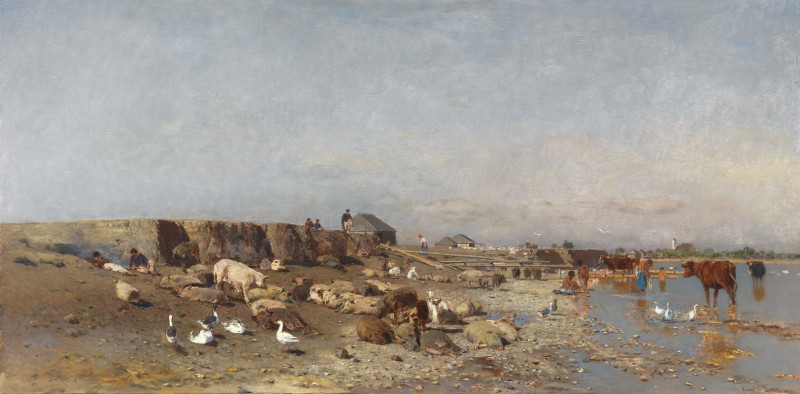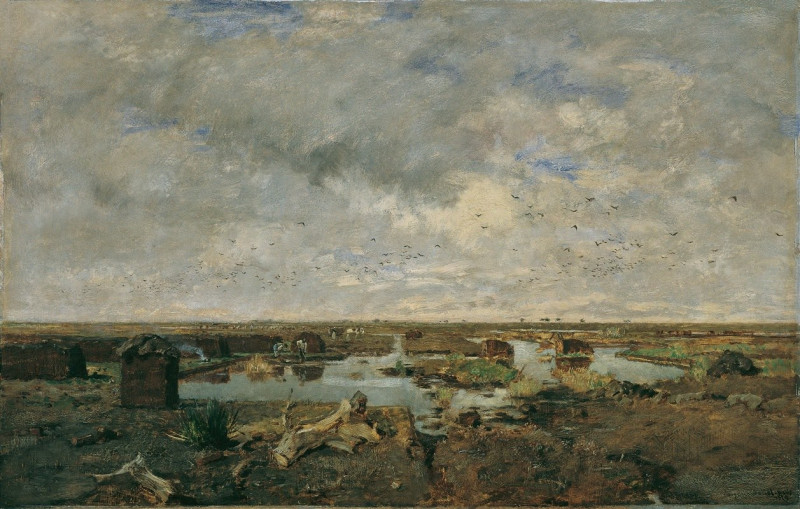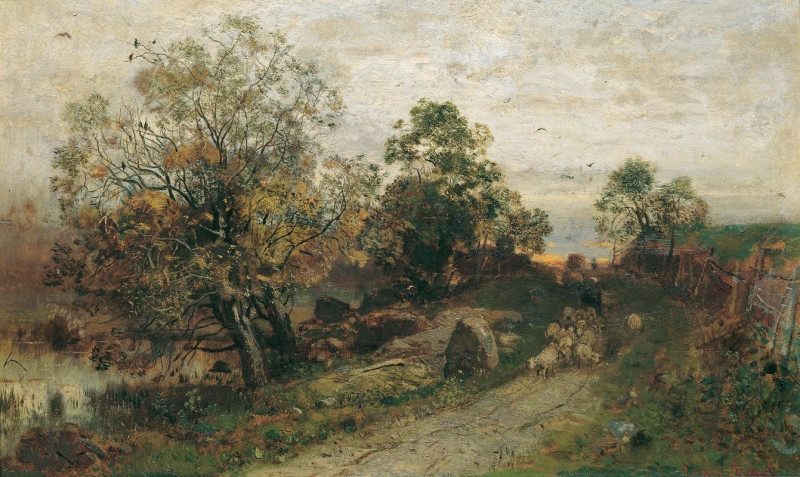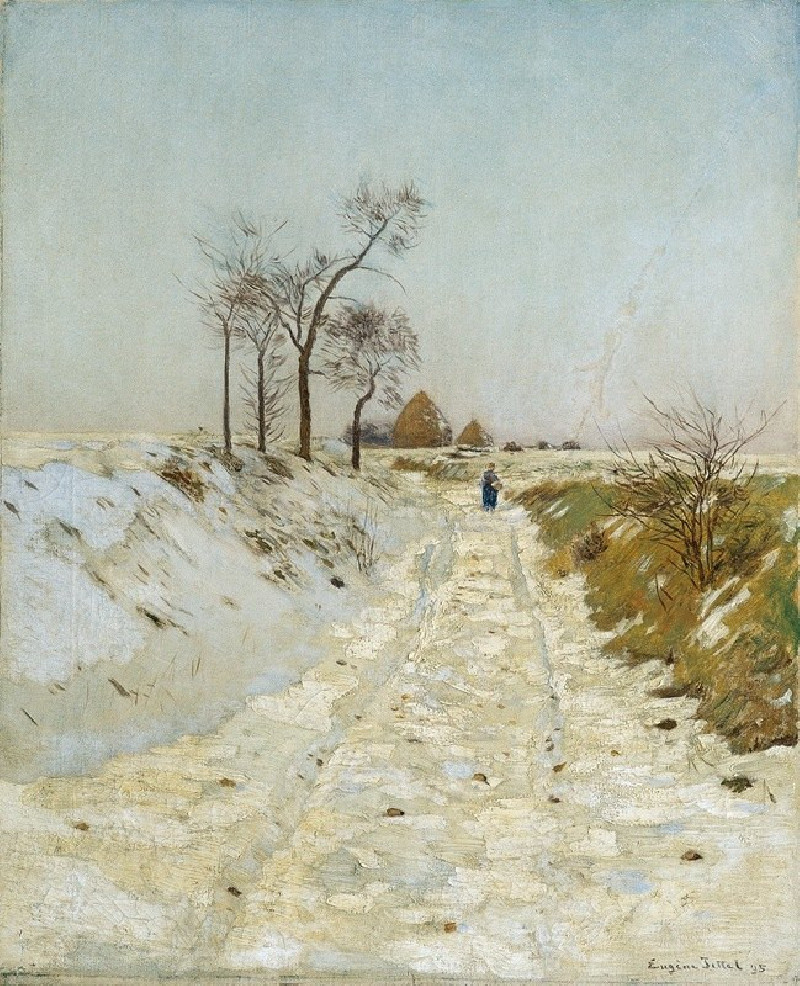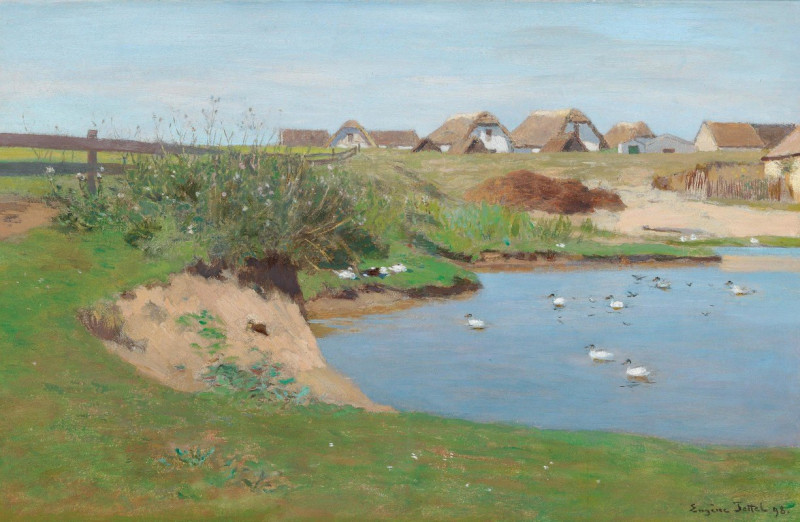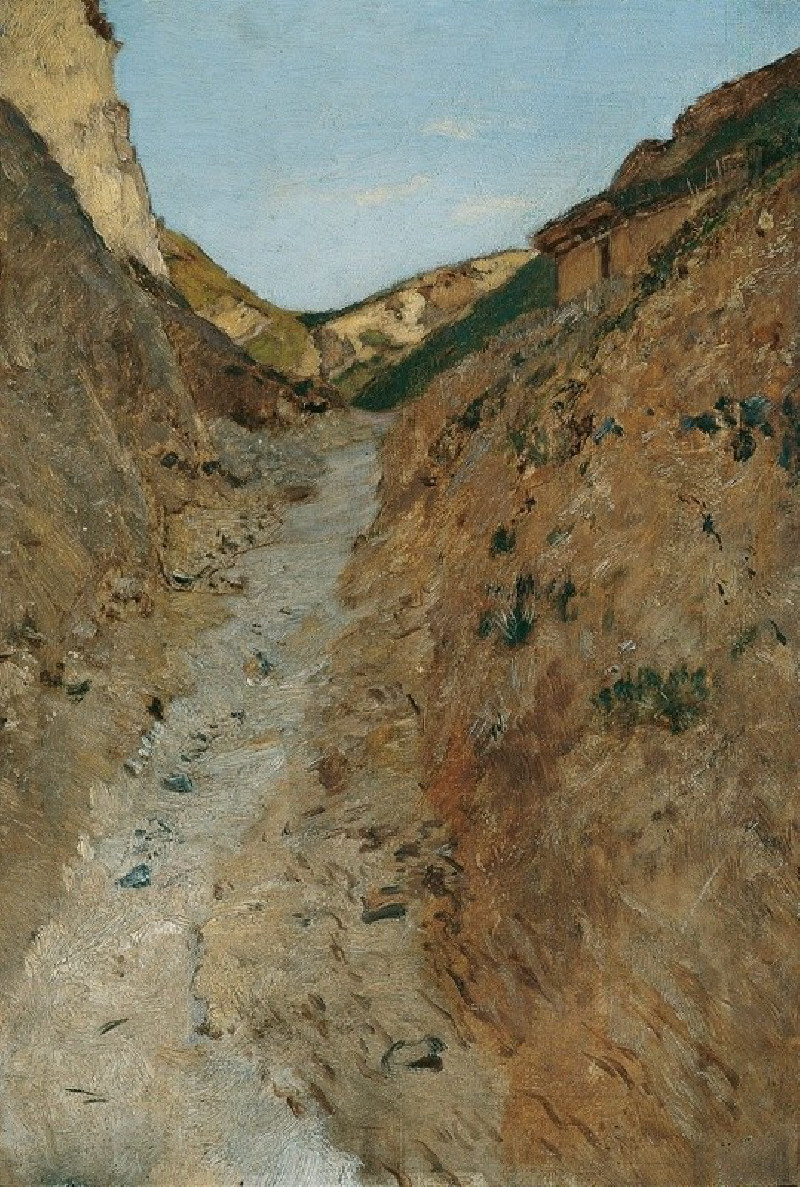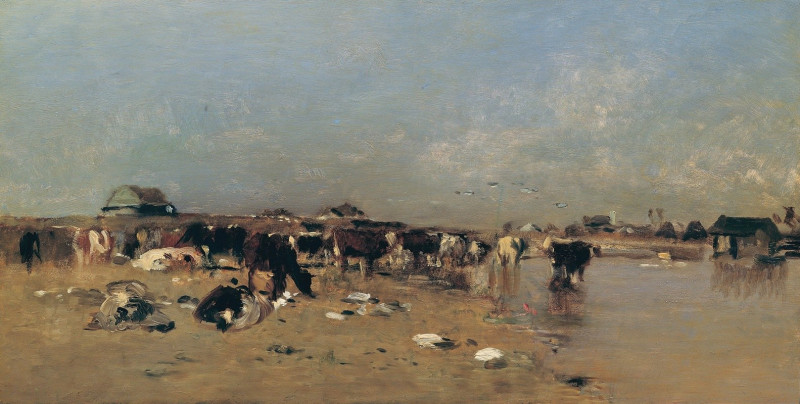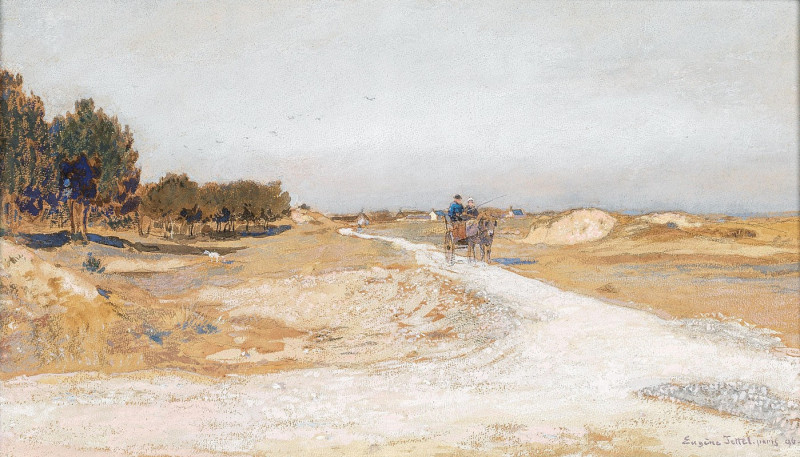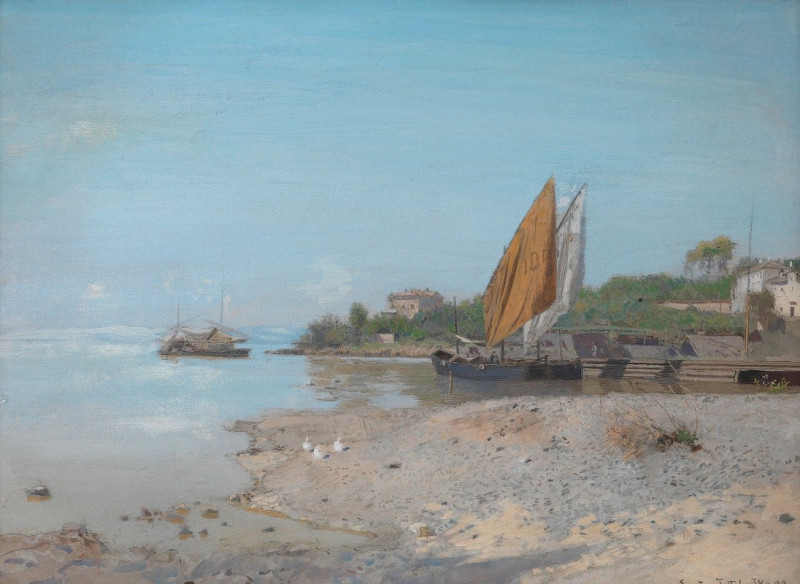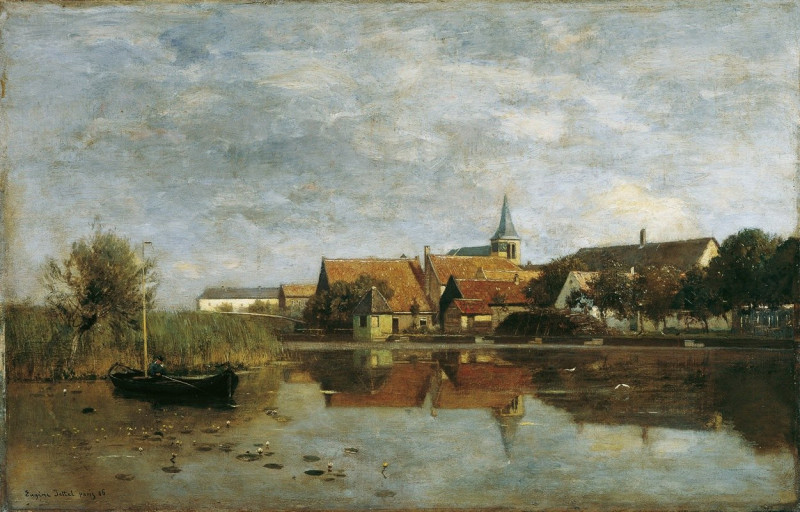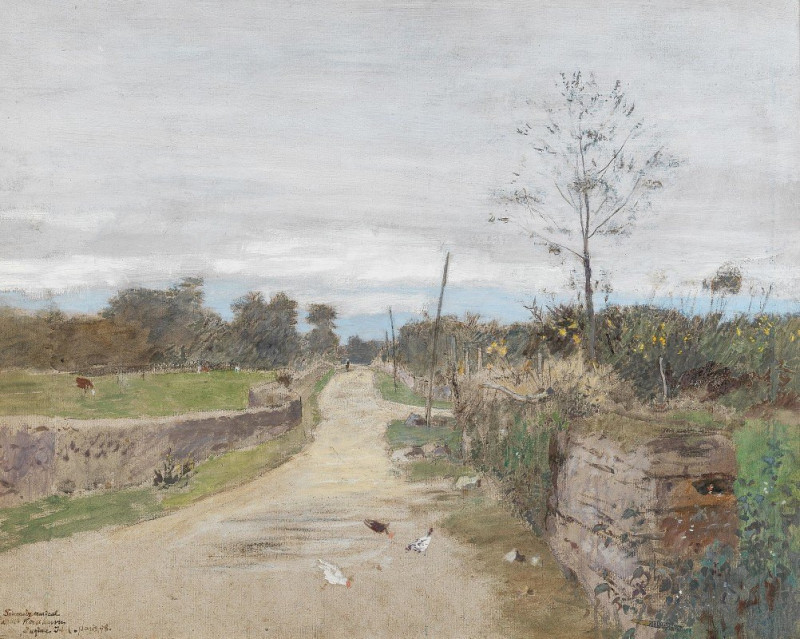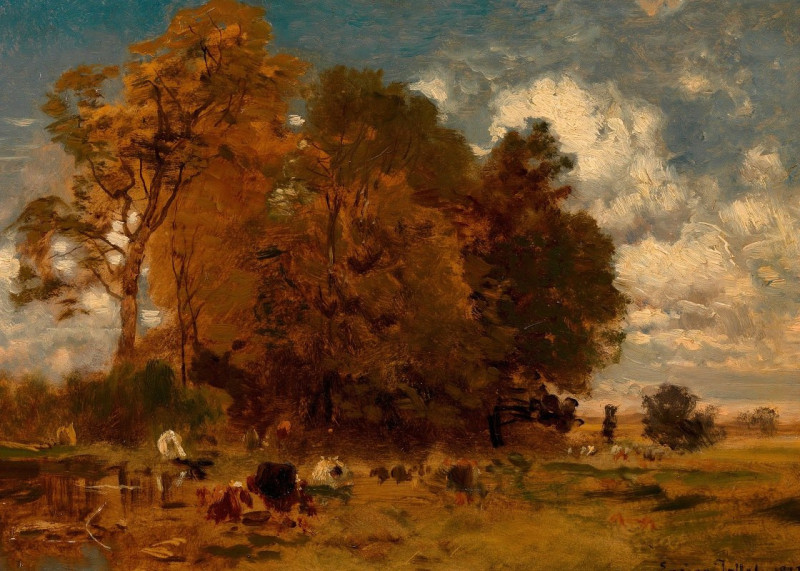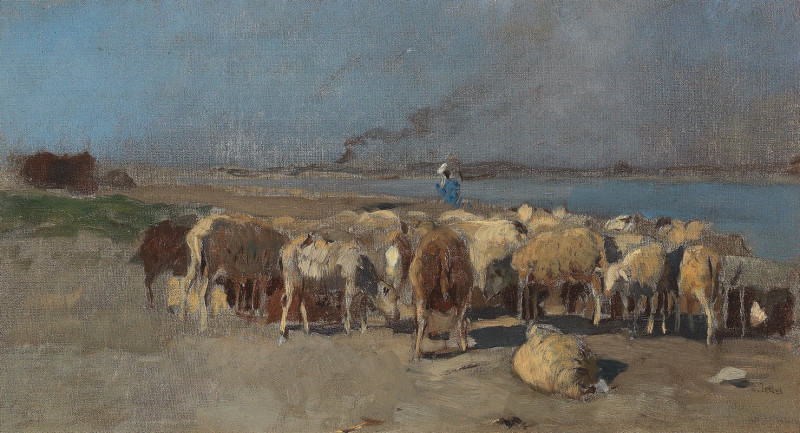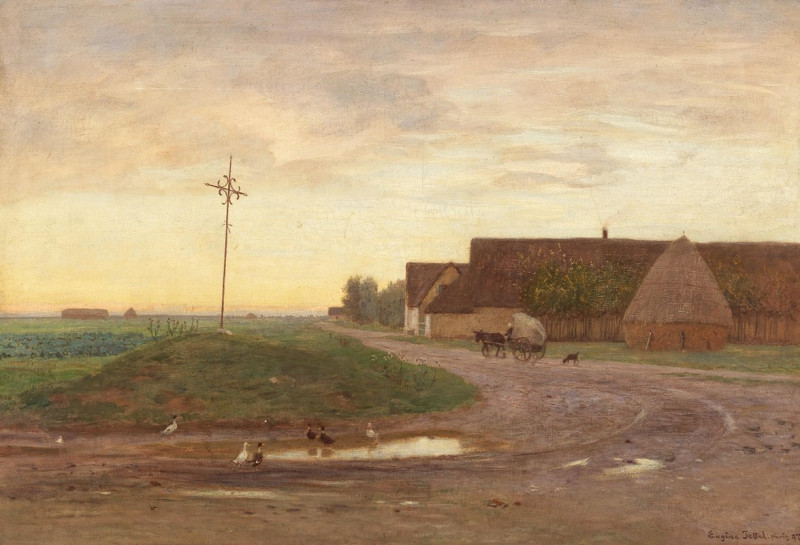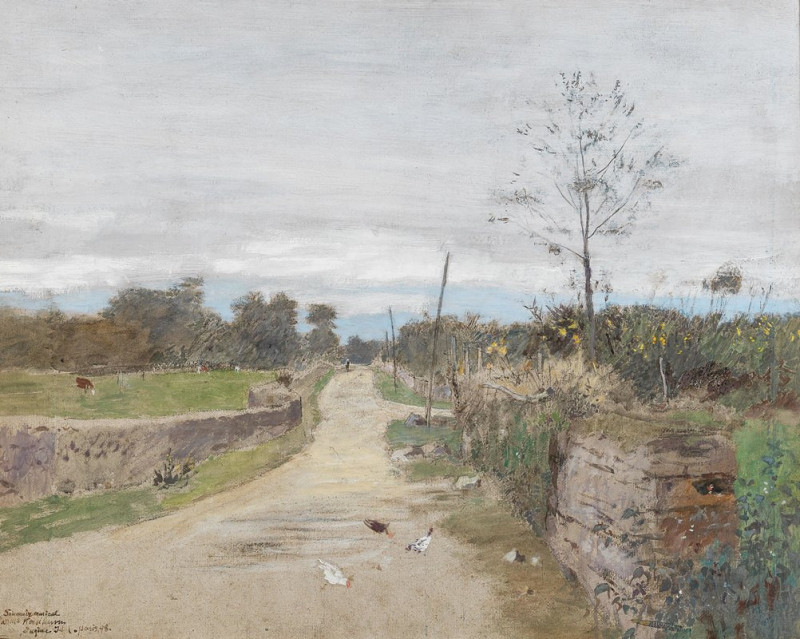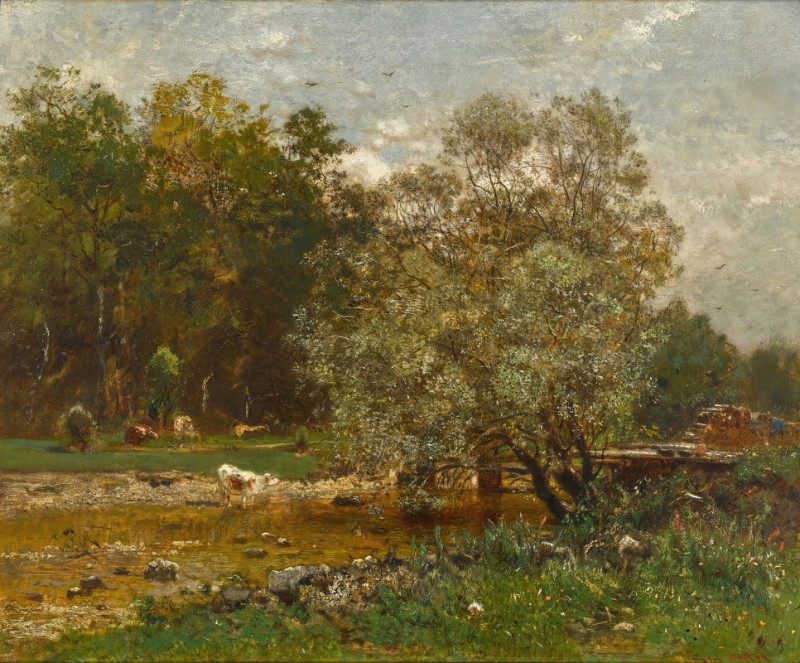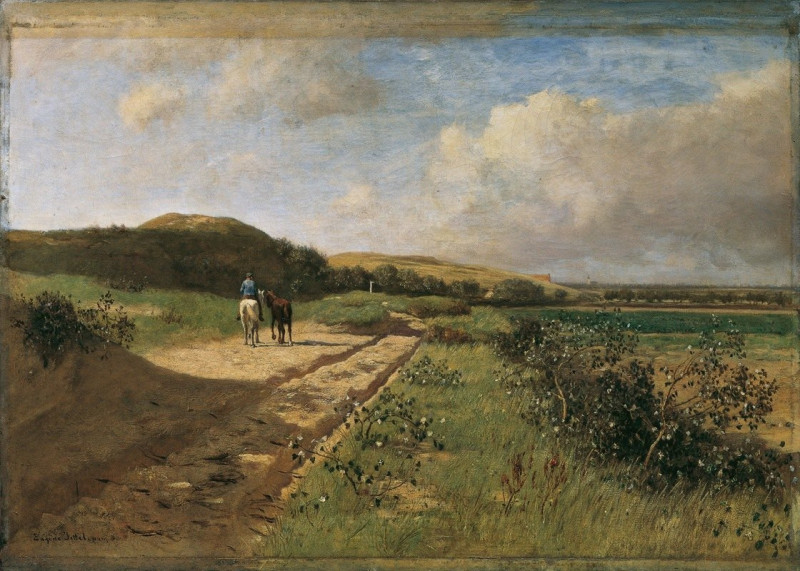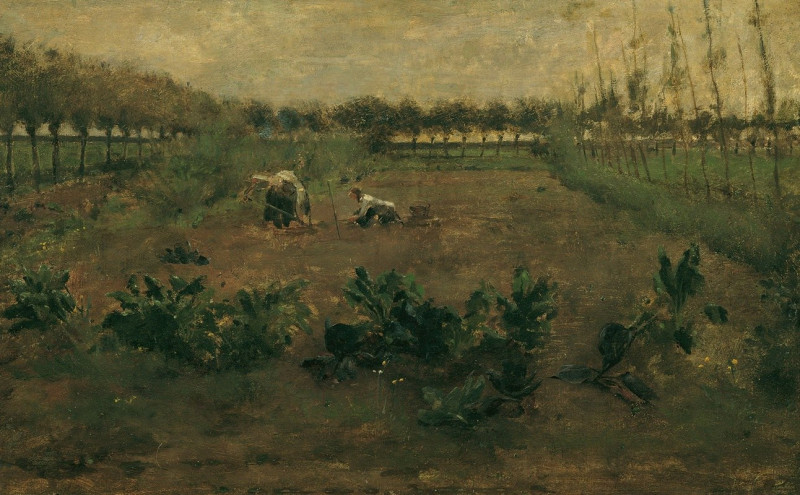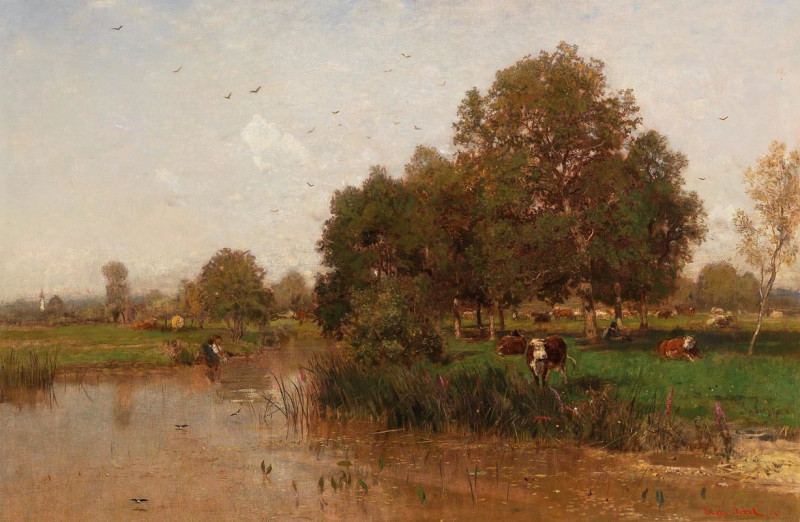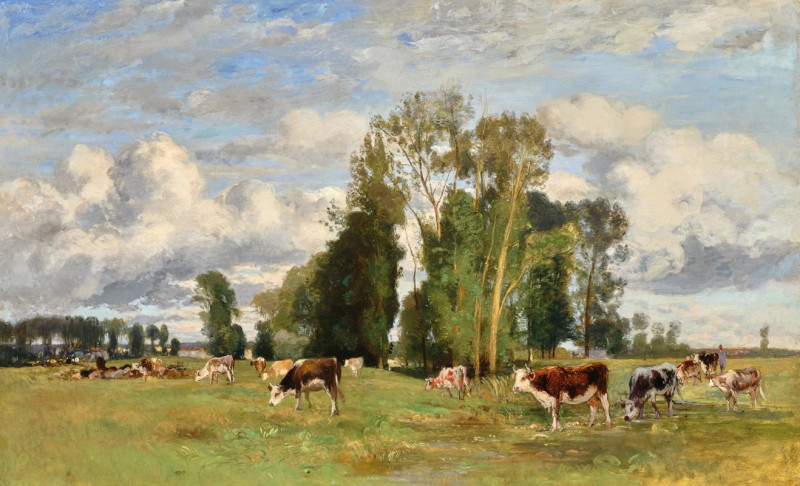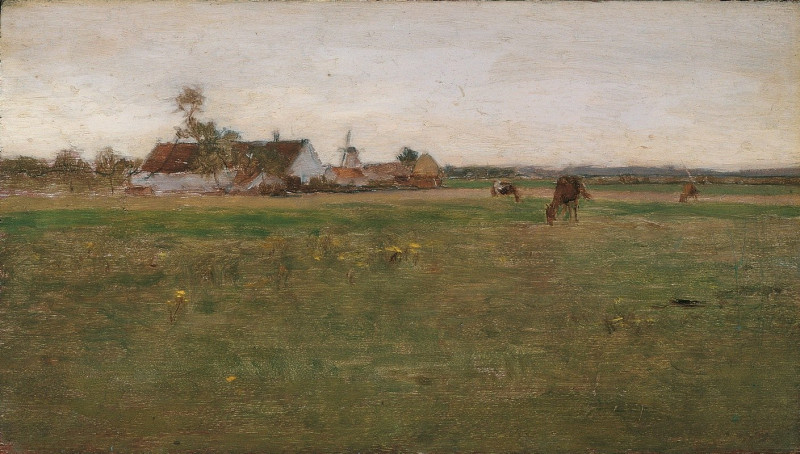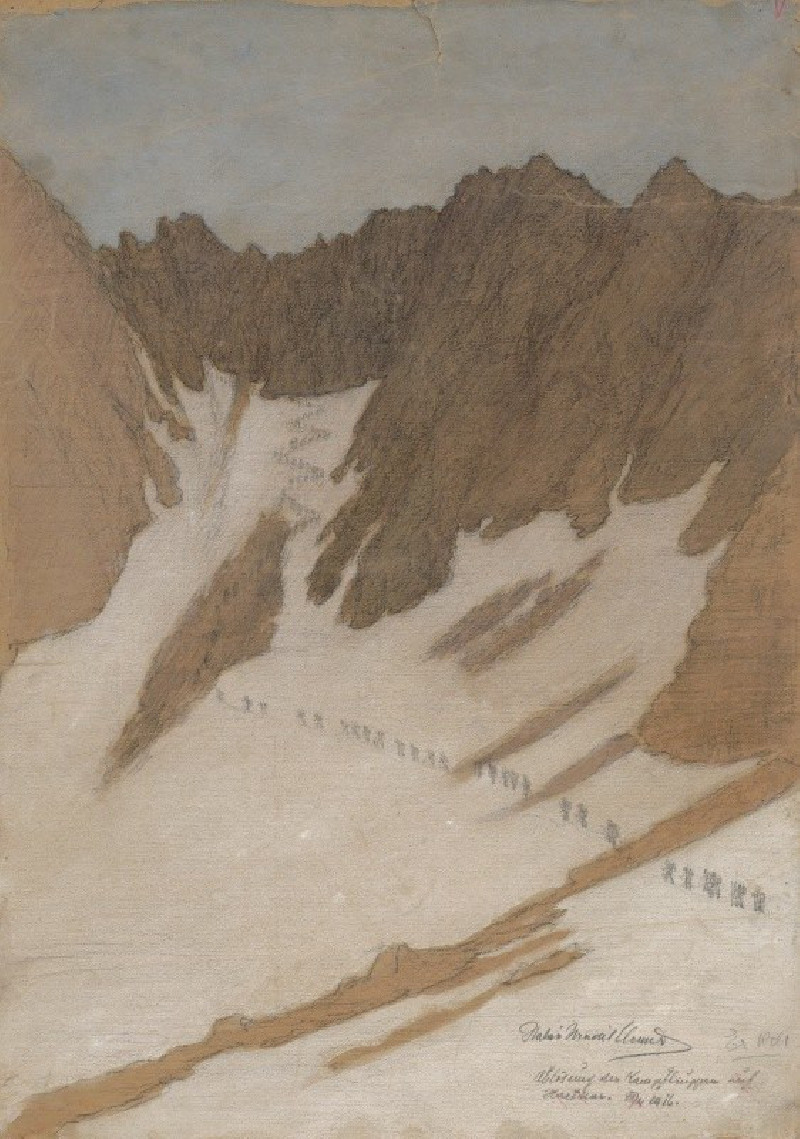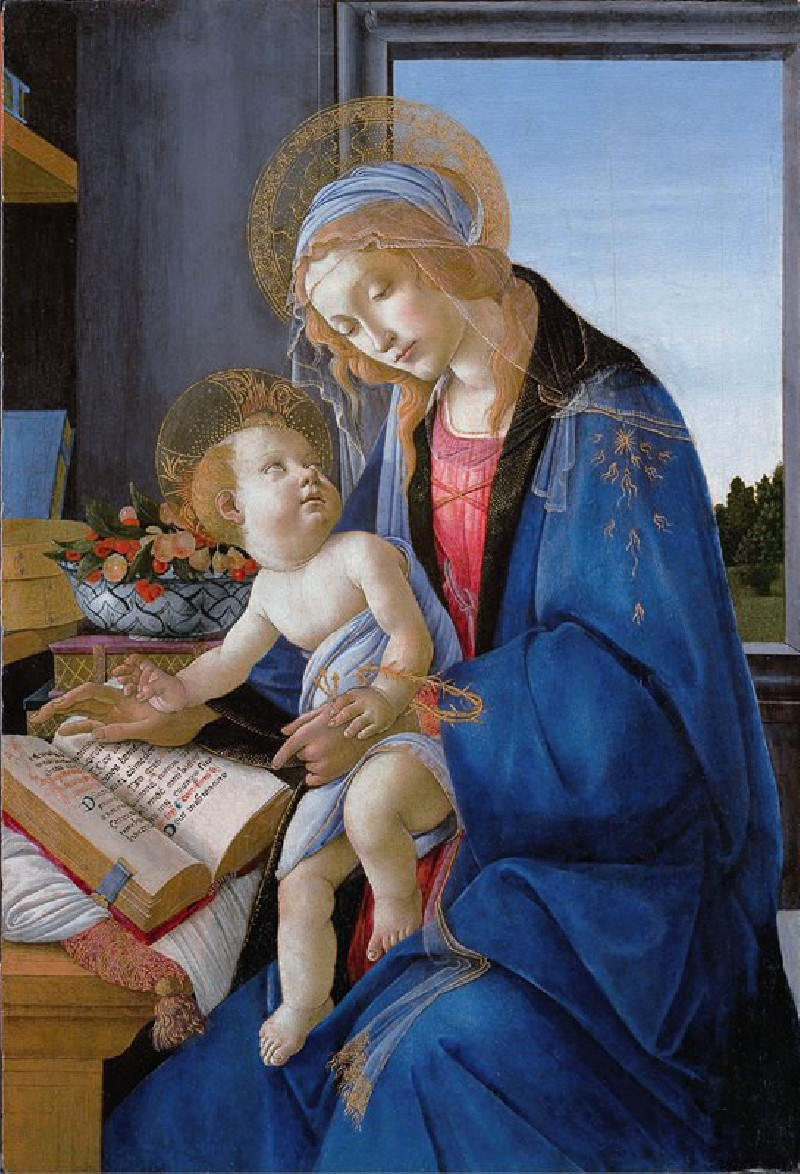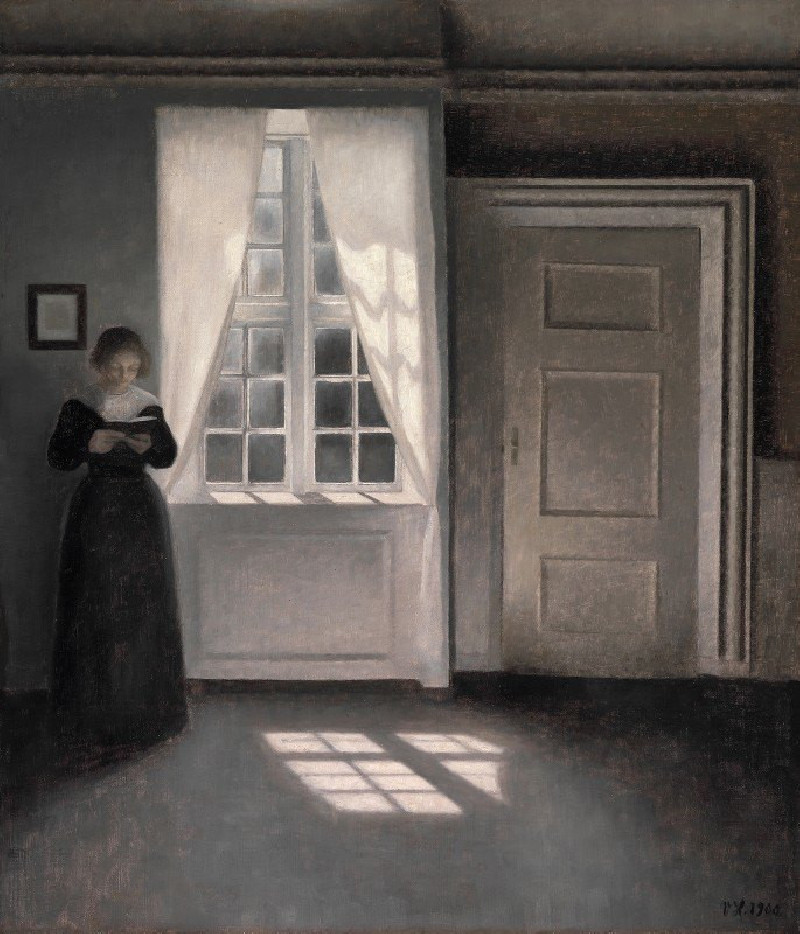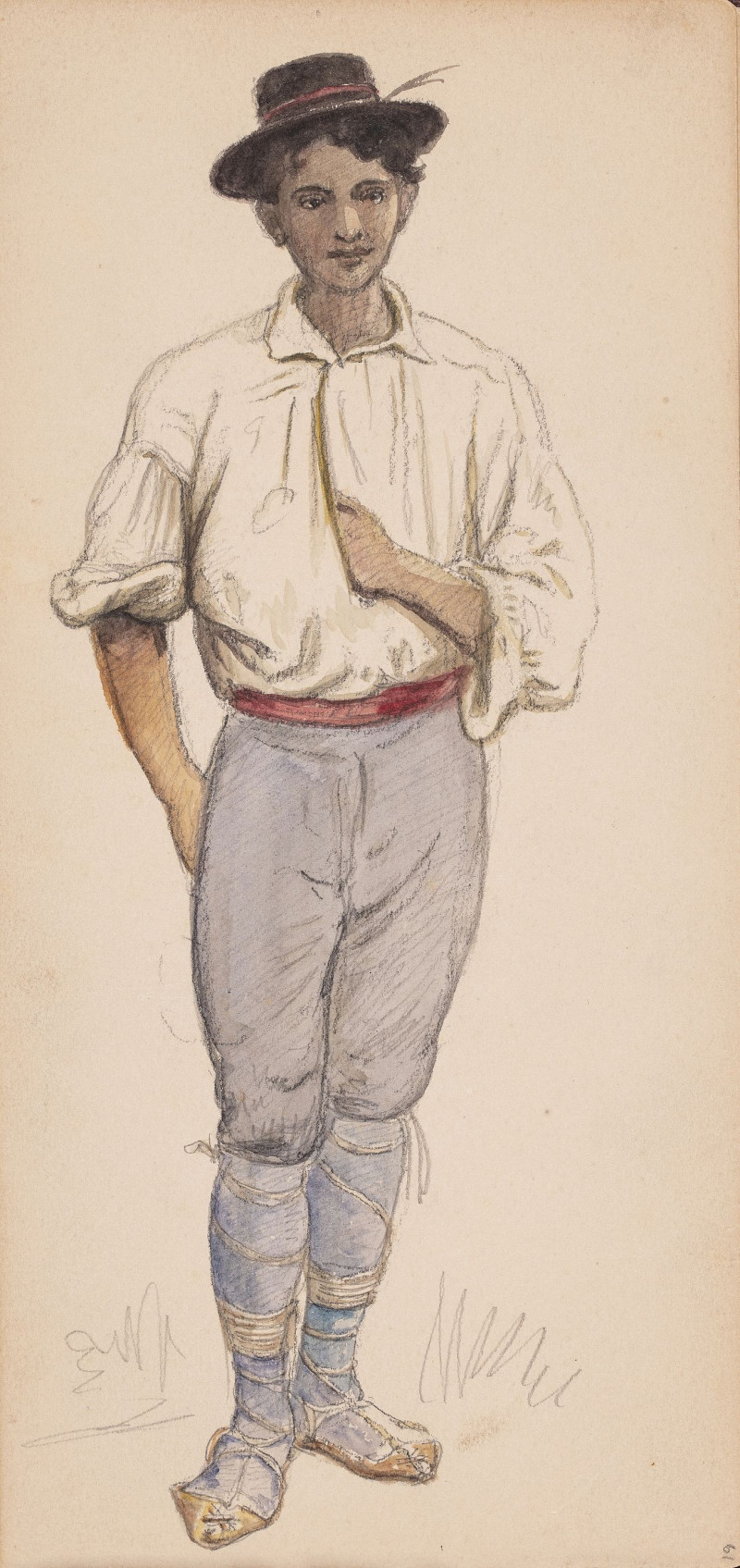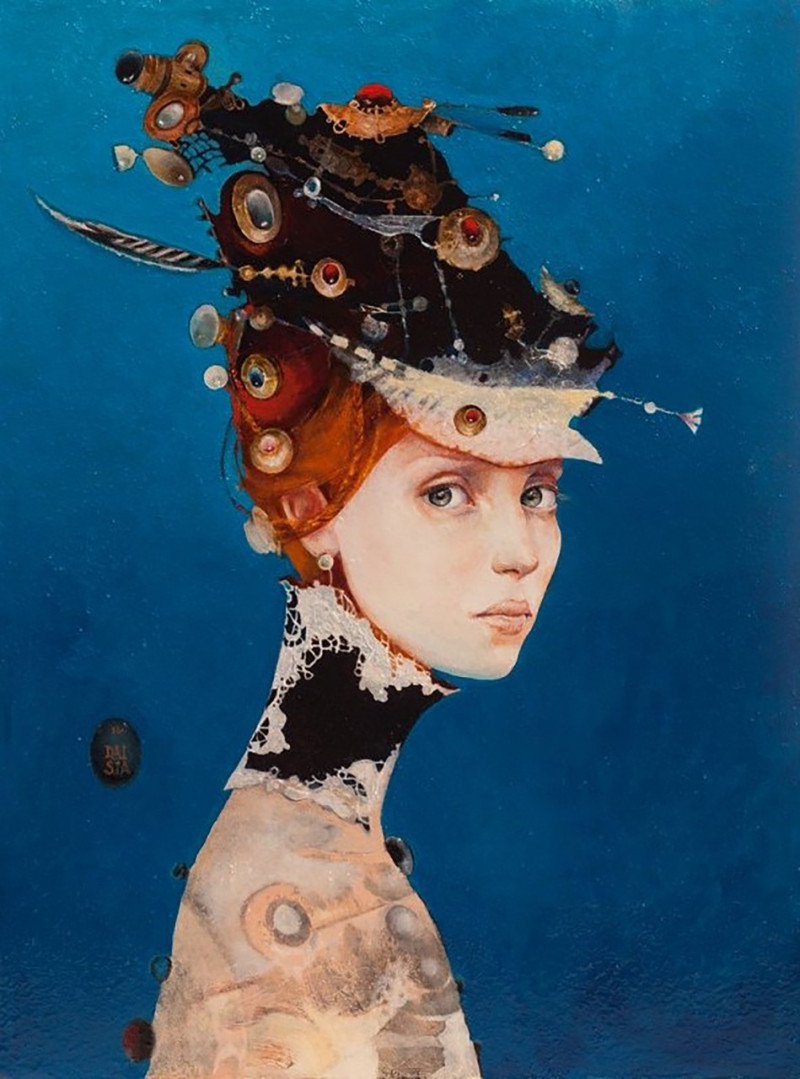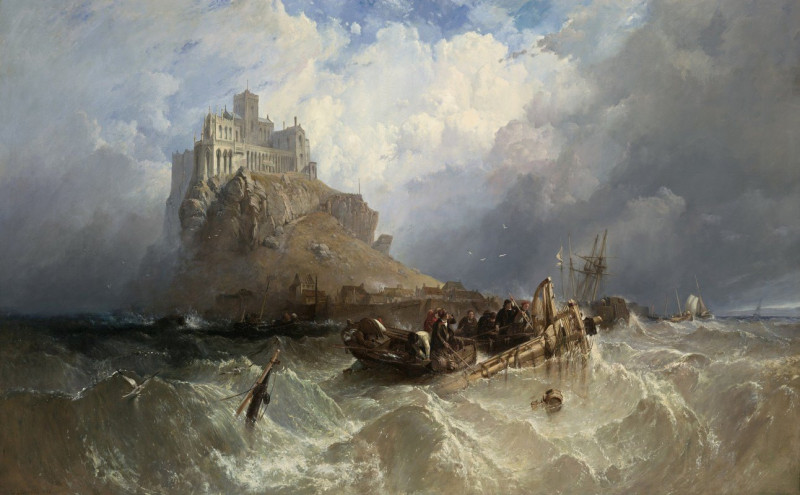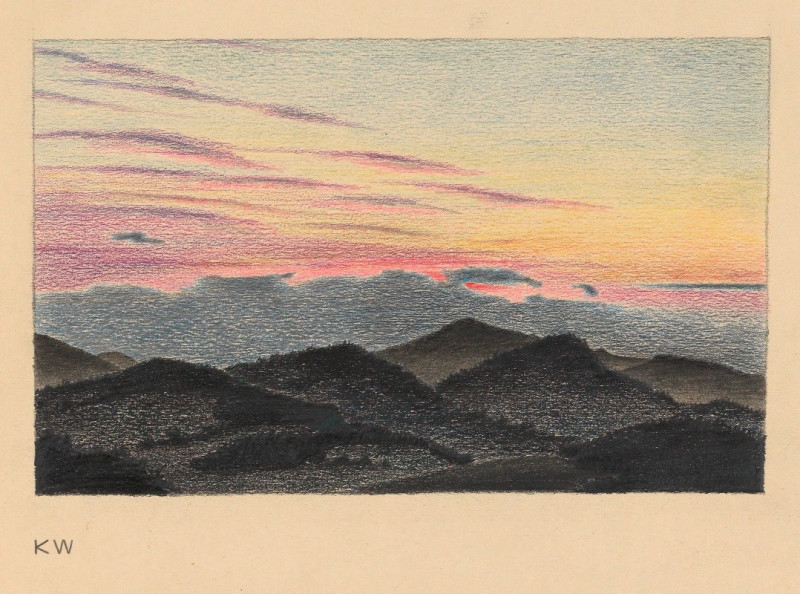Blühendes Zwiebelfeld (1897)
Technique: Giclée quality print
Recommended by our customers
More about this artwork
Eugen Jettel's "Blühendes Zwiebelfeld" ("Blooming Onion Field"), painted in 1897, captures the serene and labor-intensive atmosphere of rural life at the end of the 19th century. The painting presents a panoramic view of an expansive onion field under a vast, subdued sky, which suggests the early hours of a day or the approach of dusk, creating a soft and diffuse light that envelops the scene.The foreground is dominated by a cluster of onion blooms, their round, fluffy silhouettes etched against the earthy tones of the soil. These natural details lead the viewer's eye across varied textures and hues of the agricultural landscape. To the right, the presence of a farmer, bent over and immersed in tending to the crops, emphasizes the human element and the intimate connection between land and laborer.In the background, the delicate outlines of trees and a small cottage nestled among them provide a sense of depth and tranquility, while a distant flock of sheep adds to the pastoral charm and rural setting of the painting. Jettel's use of muted greens, browns, and grays, interspersed with the whites of the onion blooms, evokes a naturalistic palette that is both calming and immersive.This artwork not only showcases Jettel's mastery in rendering landscapes with emotional depth but also reflects a moment in time when agriculture formed the rhythm of daily life.
Delivery
Returns
Richard Alfred Eugen Jettel (20 March 1845 – 27 August 1901) was an Austrian painter, producing mainly landscapes. He studied at the Vienna Academy and moved to Paris in 1873, before moving back to Vienna in 1897 and serving as a co-founder of the Vienna Secession. He was made a Knight of the Légion d'honneur in 1898.


